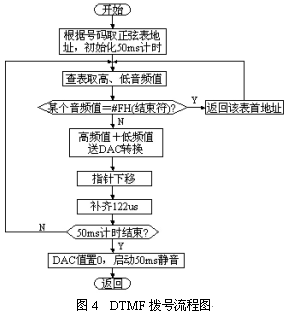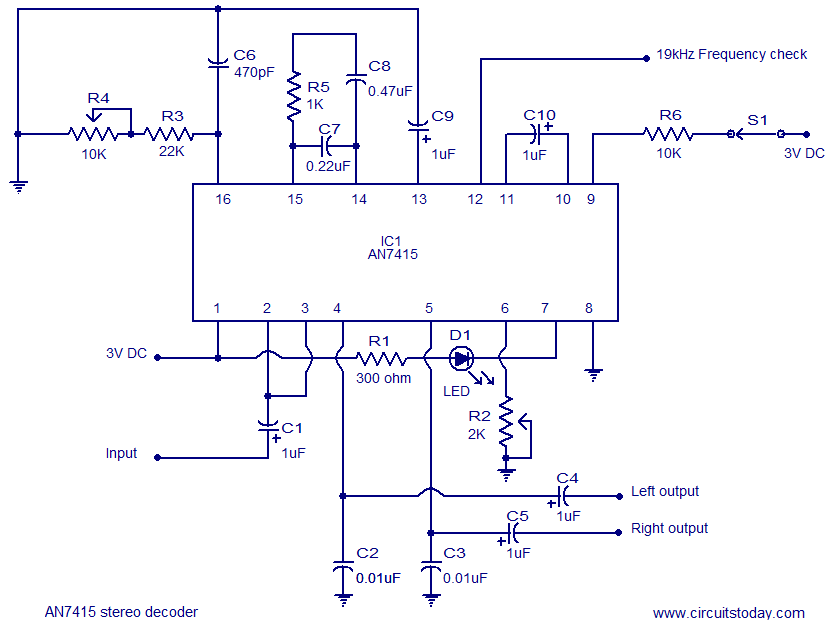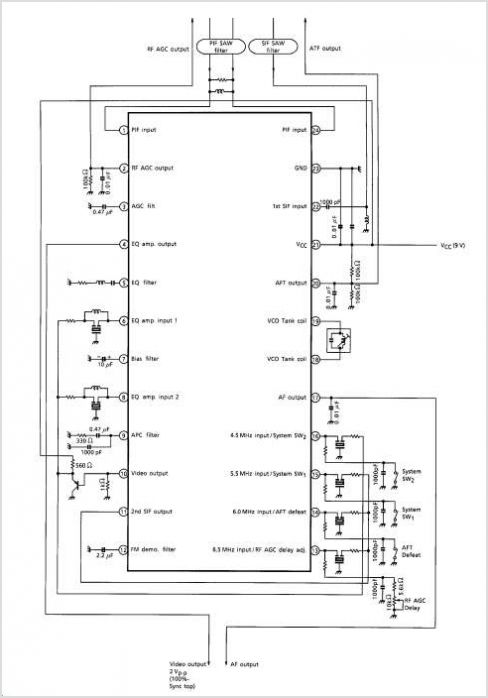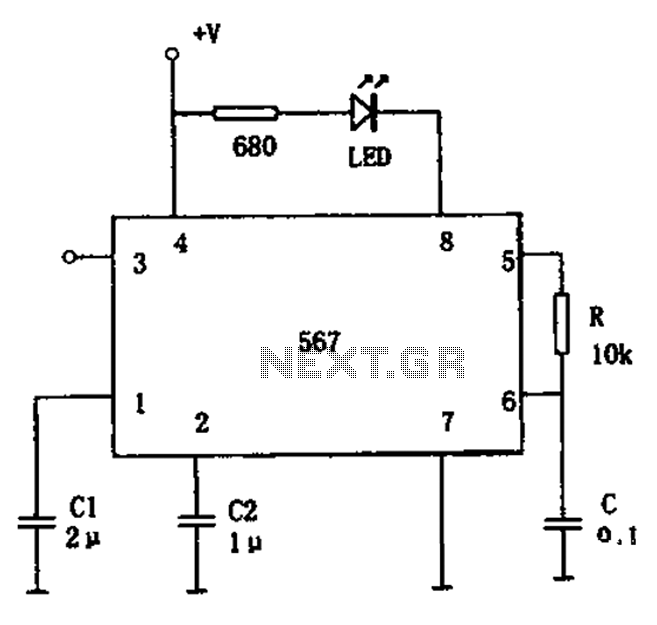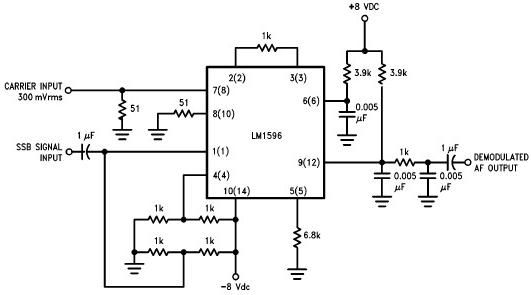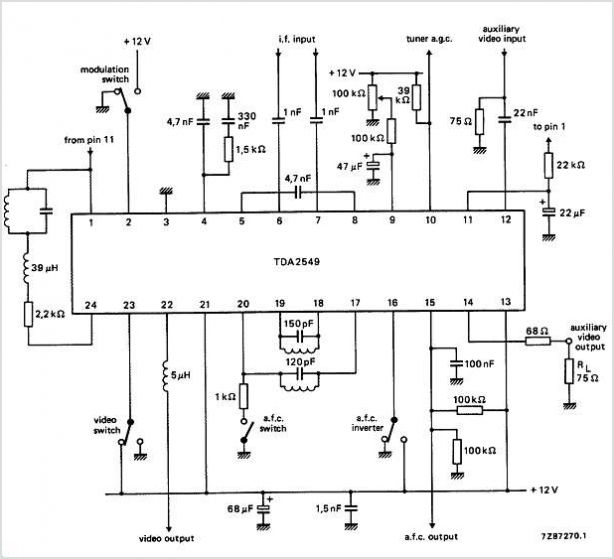
GMSK Demod
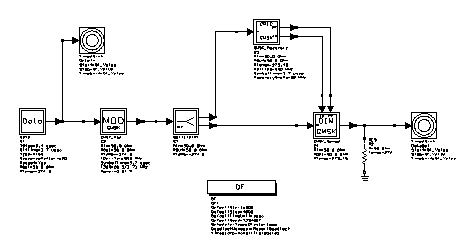
GMSK_Demod is a model of a suboptimal coherent GMSK demodulator, which differs from an optimal receiver that would utilize the Viterbi algorithm. Noncoherent demodulation is achievable through the FM_Demod component. Pin 1 serves as the input for the GMSK modulated RF signal, while pin 2 is designated for a reference RF carrier signal that is essential for demodulating the GMSK signal and extracting its inphase and quadrature components. Pin 3 is the input for a clock baseband signal that samples the demodulated inphase and quadrature signals. The reference RF carrier signal must be synchronized in both frequency and phase with the modulated signal to ensure accurate demodulation. The clock signal should have a 50 percent duty cycle, a frequency equal to half the transmitted data rate, and its phase must be calibrated so that the positive edge of the clock coincides with the moment when the eye of the demodulated inphase signal is at its maximum. Consequently, the negative edge will align with the maximum of the demodulated quadrature signal. The Coherent GMSK Demodulator Schematic illustrates the demodulator's circuitry. GMSK is a digital phase modulation technique where the phase of the carrier changes by approximately ±π/2 radians during a symbol period, based on the input being ±1. Let I(t) and Q(t) represent the inphase and quadrature components of the GMSK signal. The duration of a data symbol is denoted as T_S, with sampling instances for I(t) occurring at 2nT_S (where n=0, 1, 2, ...) and for Q(t) at (2n+1)T_S. The sampled values of I(t) and Q(t) provide critical information regarding the phase of the modulated signal, allowing for the determination of the information sequence by tracing the phase trajectory. In the demodulator circuit depicted in the Coherent GMSK Demodulator Schematic, the inphase and quadrature signals are sampled alternately, with samples I(2nT_S) and Q((2n+1)T_S) stored in sample-and-hold components. Logic gates then decode the information sequence X_n (where n = 0, 1, ...) from the samples. The carrier and clock signals can be recovered from the modulated signal using the GMSK_Recovery component or generated using N_Tones and Clock components, in which case synchronization with the received modulated signal is required.
The GMSK_Demod circuit operates by leveraging the unique characteristics of Gaussian Minimum Shift Keying (GMSK), which minimizes the bandwidth while maintaining a low bit error rate. The coherent demodulation process involves a precise alignment of the reference carrier signal to the incoming modulated signal, which is critical for accurately recovering the transmitted data. The synchronization of the clock signal is equally important, as it directly influences the timing of the sampling process.
In practical applications, the performance of the GMSK_Demod can be affected by various factors, including signal-to-noise ratio (SNR), phase noise, and frequency offset. Therefore, implementing additional filtering and error correction techniques may enhance the reliability of the demodulation process. The use of sample-and-hold circuits ensures that the sampled values of I(t) and Q(t) remain stable during the decoding phase, allowing for accurate interpretation of the information sequence.
Overall, the GMSK_Demod component is a vital part of communication systems that utilize GMSK modulation, providing a balance between complexity and performance, making it suitable for various applications, including mobile communications and satellite systems.GMSK_Demod is a model of a suboptimal (an optimal receiver would require the Viterbi algorithm) coherent GMSK demodulator (refer to the GMSK_Recovery component). Noncoherent demodulation can be performed with the FM_Demod component. Pin 1 is the input for the GMSK modulated RF signal; pin 2 is the input for a reference RF carrier signal used to de
modulate the GMSK signal and obtain its inphase and quadrature components; pin 3 is the input for a clock baseband signal used to sample the demodulated inphase and quadrature signals. The reference RF carrier signal should be synchronized in frequency and phase to the modulated signal for proper demodulation.
The clock signal should have a duty cycle of 50 percent; its frequency should equal half the transmitted data rate; and, its phase should be adjusted so that the positive edge of the clock occurs at the instant when the eye of the demodulated inphase signal is maximum (therefore, the negative edge will occur when the eye of the demodulated quadrature signal is maximum). Coherent GMSK Demodulator Schematic shows the demodulator schematic. To understand the operation of this demodulator, note that GMSK is a digital phase modulation technique where the phase of the carrier G †(t), changes by G‚ ±G /2 radians (approximately) in a symbol period, depending on whether the input is G‚ ±1.
Let I(t) and Q(t) be the inphase and quadrature components of the GMSK signal. Let T S be the duration of an data symbol, and let 2 nT S, n=0, 1, 2, . be the instances when I(t) is sampled and (2 n+1)T S, n=0, 1, 2, . be the instances when Q(t) is sampled. The samples of I(t) and Q(t) then provide the following information about the phase of the modulated signal: By following the phase trajectory, the information sequence can be determined. In the demodulator circuit shown in Coherent GMSK Demodulator Schematic, the demodulated inphase and quadrature signals are sampled alternately and samples I (2 nT S ) and Q (2 n +1) T S ) are stored in the sample and hold components.
The logic gates then decode the information sequence X n, n = 0, 1, . from the samples based on The carrier and clock signal can be recovered from the modulated signal with the GMSK_Recovery component (see GMSK Demodulator with Carrier/Clock Recovery Component ). Or, ideal signals can be generated using N_Tones and Clock components, in which case the carrier and clock signals should be synchronized with the received modulated signal.
🔗 External reference
The GMSK_Demod circuit operates by leveraging the unique characteristics of Gaussian Minimum Shift Keying (GMSK), which minimizes the bandwidth while maintaining a low bit error rate. The coherent demodulation process involves a precise alignment of the reference carrier signal to the incoming modulated signal, which is critical for accurately recovering the transmitted data. The synchronization of the clock signal is equally important, as it directly influences the timing of the sampling process.
In practical applications, the performance of the GMSK_Demod can be affected by various factors, including signal-to-noise ratio (SNR), phase noise, and frequency offset. Therefore, implementing additional filtering and error correction techniques may enhance the reliability of the demodulation process. The use of sample-and-hold circuits ensures that the sampled values of I(t) and Q(t) remain stable during the decoding phase, allowing for accurate interpretation of the information sequence.
Overall, the GMSK_Demod component is a vital part of communication systems that utilize GMSK modulation, providing a balance between complexity and performance, making it suitable for various applications, including mobile communications and satellite systems.GMSK_Demod is a model of a suboptimal (an optimal receiver would require the Viterbi algorithm) coherent GMSK demodulator (refer to the GMSK_Recovery component). Noncoherent demodulation can be performed with the FM_Demod component. Pin 1 is the input for the GMSK modulated RF signal; pin 2 is the input for a reference RF carrier signal used to de
modulate the GMSK signal and obtain its inphase and quadrature components; pin 3 is the input for a clock baseband signal used to sample the demodulated inphase and quadrature signals. The reference RF carrier signal should be synchronized in frequency and phase to the modulated signal for proper demodulation.
The clock signal should have a duty cycle of 50 percent; its frequency should equal half the transmitted data rate; and, its phase should be adjusted so that the positive edge of the clock occurs at the instant when the eye of the demodulated inphase signal is maximum (therefore, the negative edge will occur when the eye of the demodulated quadrature signal is maximum). Coherent GMSK Demodulator Schematic shows the demodulator schematic. To understand the operation of this demodulator, note that GMSK is a digital phase modulation technique where the phase of the carrier G †(t), changes by G‚ ±G /2 radians (approximately) in a symbol period, depending on whether the input is G‚ ±1.
Let I(t) and Q(t) be the inphase and quadrature components of the GMSK signal. Let T S be the duration of an data symbol, and let 2 nT S, n=0, 1, 2, . be the instances when I(t) is sampled and (2 n+1)T S, n=0, 1, 2, . be the instances when Q(t) is sampled. The samples of I(t) and Q(t) then provide the following information about the phase of the modulated signal: By following the phase trajectory, the information sequence can be determined. In the demodulator circuit shown in Coherent GMSK Demodulator Schematic, the demodulated inphase and quadrature signals are sampled alternately and samples I (2 nT S ) and Q (2 n +1) T S ) are stored in the sample and hold components.
The logic gates then decode the information sequence X n, n = 0, 1, . from the samples based on The carrier and clock signal can be recovered from the modulated signal with the GMSK_Recovery component (see GMSK Demodulator with Carrier/Clock Recovery Component ). Or, ideal signals can be generated using N_Tones and Clock components, in which case the carrier and clock signals should be synchronized with the received modulated signal.
🔗 External reference
